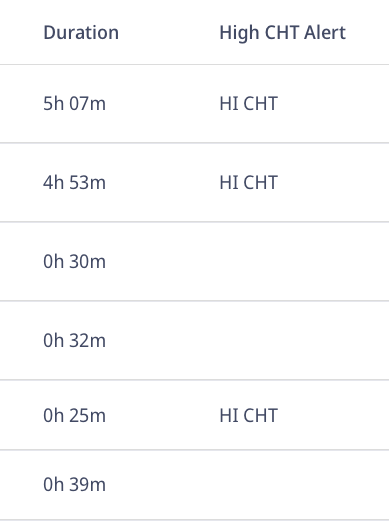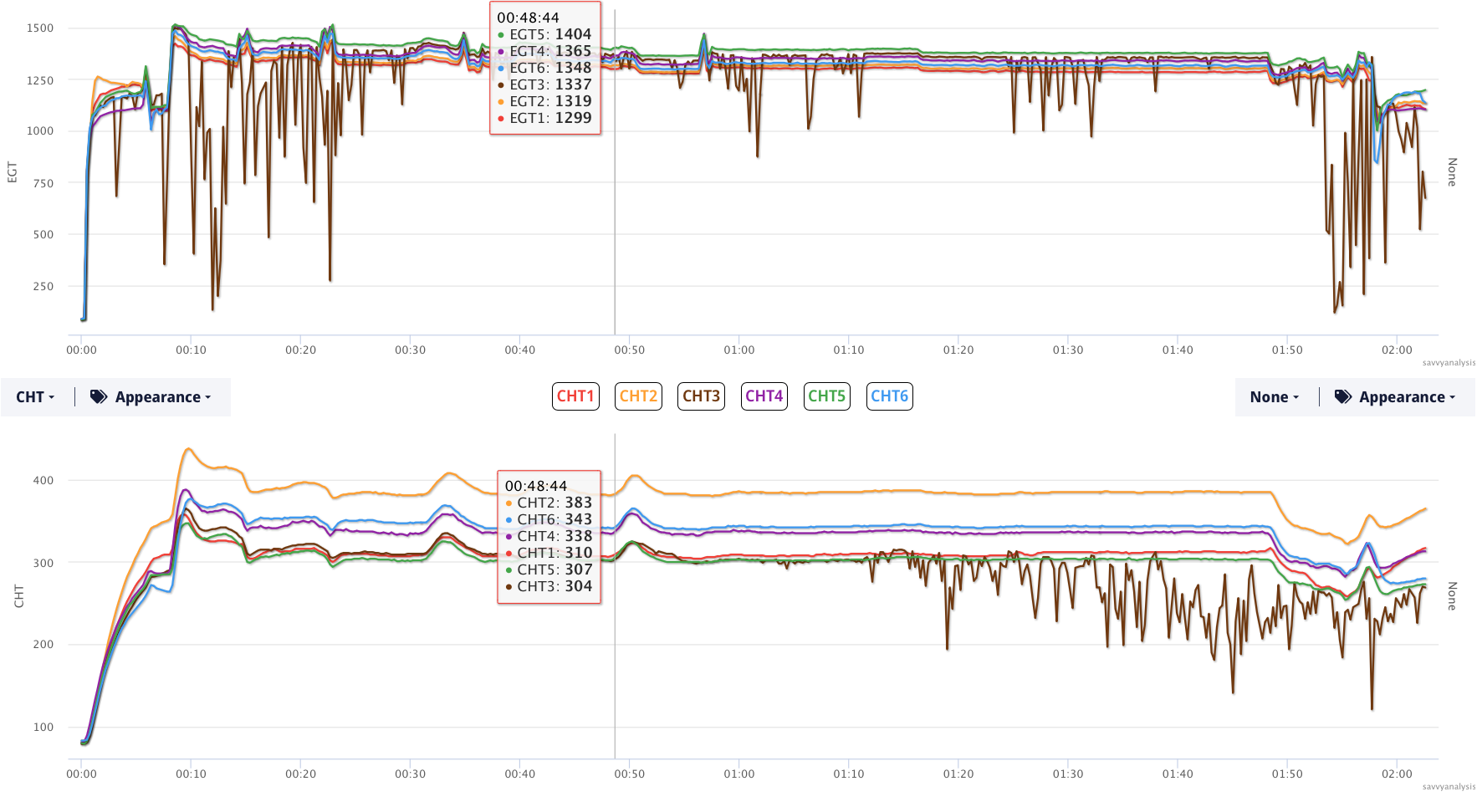In a prebuy exam, the logbooks are the most important item to review. If the logbooks check out ok, reviewing a set of borescope pictures is a good next step. If there are no dealbreakers so far, take a look at the engine data – at least for the last couple of years. When a non-pre buy ticket comes with data from a test profile we’re looking at a specific flight. If we have a question about something, we might look back at a few flights or ahead a few flights for corroboration. But the goal is to take specific measurements and deliver a report using our standard report form.
With a pre-buy, we want to look at history and we’re looking for showstoppers. Persistent high CHTs, frequency and length of flights and data reliability as a proxy for attention to maintenance all have a story to tell. If you’re the seller, you want the data to confirm your good powerplant management skills, that the airplane is not a hangar queen, and that when a problem arises it gets dealt with. If your data does all that, your airplane is more valuable than one whose data isn’t as attractive. If you’re the buyer, you’re using the data to assess risk and value. If the airplane you’re buying has a run-out engine that you’re going to replace, then the seller’s powerplant management isn’t as relevant. On the other hand, if it’s a mid time engine and you’re hoping to get to TBO and well beyond, you want to know what you’re buying.
Here’s how we do it.
A good first step is to see where the High CHT alert is set. If it’s 400º and no flights are showing HI CHT —

— then set it to 390 and see what shows. Keep dropping it down until you find the high range. If it’s a Cirrus you may find the high range is 350 or less.
On the other hand, if it’s 400º and all flights are alerting, then try adding 10 degrees at a time until you get the high range.
The ideal alert setting is a little higher than what’s normal for that airplane. Too high and only catastrophic events alert, too low and everything alerts. (btw, that’s true for any airplane – not just those in prebuy.)
So start with CHT evaluation. Persistent high CHTs could be a showstopper. At the very least you’d like an explanation – and that might be the showstopper.
If the airplane type is in a cohort, running a report card will give your the high and low values for CHT for the chosen timeframe, and compare those to others in the cohort.
As I’m writing this there are 209 cohorts. A cohort is an airframe and engine combo. We add to the list when the data server tells us we have enough flight data for meaningful analysis.
A trend analysis report is probably not as useful in the context of a prebuy exam, unless the airplane has a new engine and you want to confirm that CHT’s have been trending downward since the break-in flights.
Another thing you can tell from the flights page is frequency of flight. If you see big gaps between flights. It could be it was down for an engine change or paint job – which you can tell from the logs. Lots of airplanes spent time in the shop in 2019 getting panel overhauls as part of ADS-B upgrades. Lots of airplanes spent time in the shop in the last couple of years because of supply chain issues. An unexplained gap is worthy of investigation. Next take a look at the flight length and see if anything stands out. Are there lots of long trips? Lots of short trips? A nice mix? You’re looking for anything unusual.
After CHTs and frequency of flight on the flight page, we like to look at data from individual flights. Do the sensors work? When a sensor fails, is it repaired promptly or does it take a while – which might indicate a casual approach to maintenance overall.

Where does the test profile come in? Sometimes it’s hard to get a seller to take the airplane up to 8000-9000 MSL and perform the mixture sweeps and LOP mag check in the Savvy Test Profile. Maybe the airplane’s out of annual and can’t fly at all. We’ve seen that more than once. Or maybe the plan is to start with a prebuy exam and if all goes well, morph that into an annual inspection. We’ve seen that, too.
If you can include a flight in the prebuy exam, it’s a chance to evaluate systems that are best checked in the air. Is there noise in the radios? Does the GPS find and retain satellites? Are the databases up to date? Does the ADS-B work as it should? What’s the bus voltage under load? Do the gear and flaps work properly? Are there unexplained noises or vibrations? Or unexplained smells? Are oil temp and pressure in a good range? Does the airplane fly straight? Does the autopilot work properly? If you can add the test profile, we can assess mixture distribution and ignition health, too.
We stop short of answering “should I buy this plane?”. Some buyers are willing to pay a premium to get a 10 inside and out. Others are looking for a project airplane at a lower price. Our job is to evaluate the data we have and look for showstoppers that help the buyer make that decision.